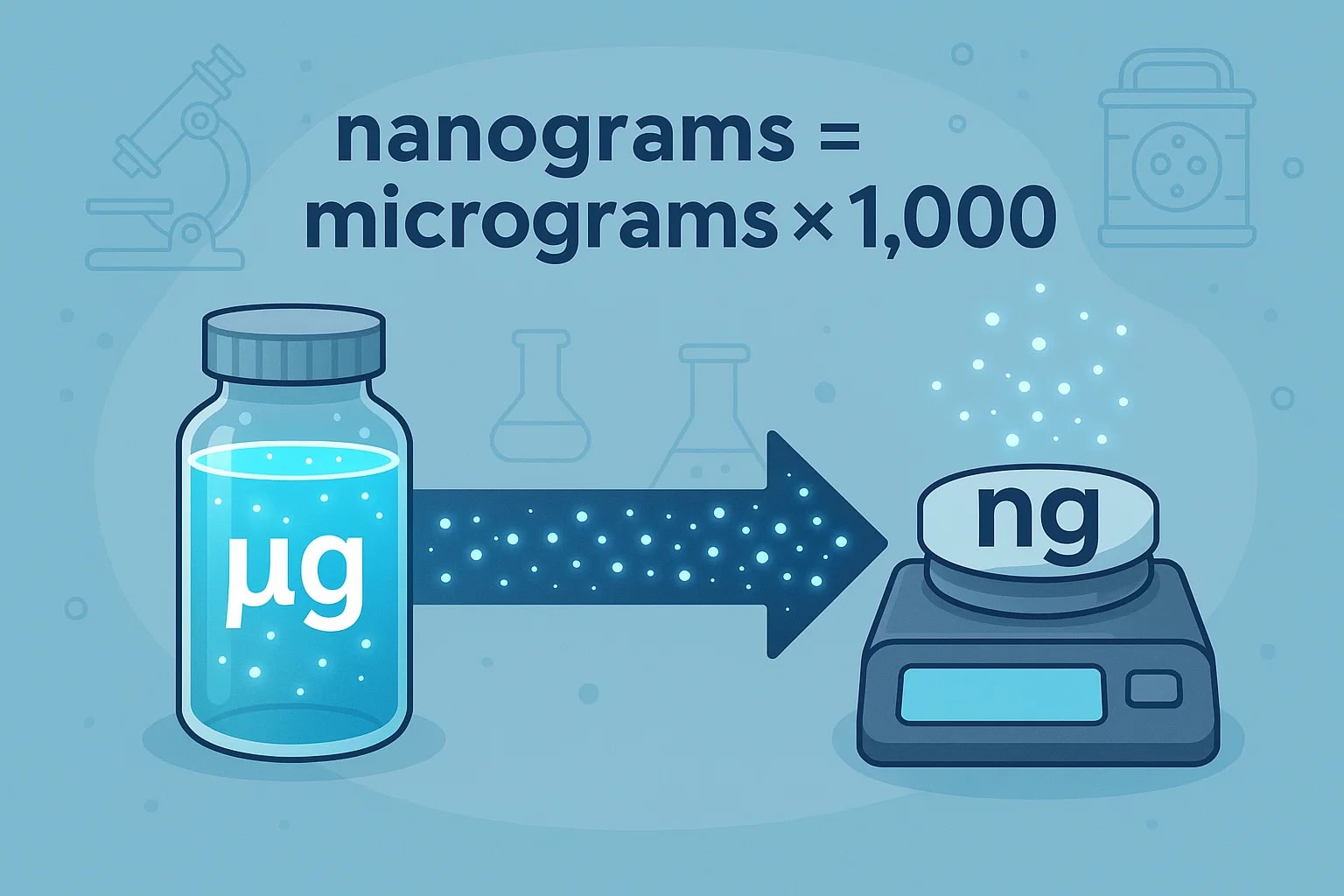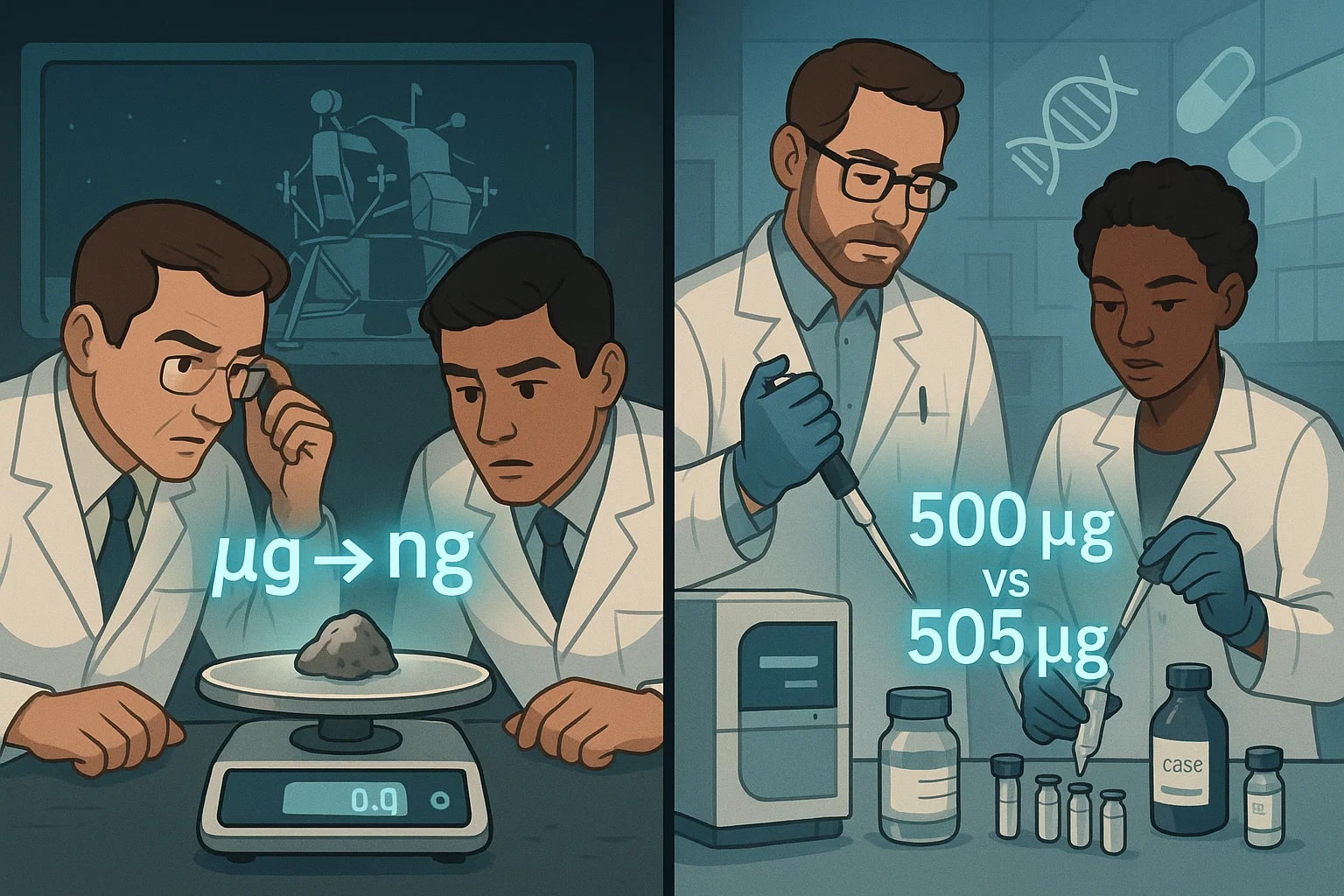microgram to nanogram – How to convert μg to ng
When it comes to measuring incredibly small quantities, the relationship between a microgram and a nanogram is essential. A microgram (μg) equals 1,000 nanograms (ng). Whether in pharmaceutical research, environmental science, or forensic labs, the accuracy of such conversions ensures results remain consistent and trustworthy.
What is a Microgram?
A microgram is one-millionth of a gram. In scientific notation, that’s 1 μg = 1 × 10⁻⁶ g. This unit is common in medicine, toxicology, and chemistry, where even the slightest change in dosage can have significant effects. For example, modern vaccines and potent hormones are often measured in micrograms due to their small but powerful biological effects.
What is a Nanogram?
A nanogram is one-billionth of a gram. Written scientifically, 1 ng = 1 × 10⁻⁹ g. Because nanograms are so small, they’re often used in cutting-edge fields like DNA sequencing, environmental pollutant tracking, and ultra-sensitive forensic testing. Detecting certain toxins or chemical residues often involves measuring amounts as tiny as a few nanograms.
Conversion Formula
The conversion from micrograms to nanograms is straightforward:
1 μg = 1 000 ng
For example, 2 μg × 1 000 = 2 000 ng.
To convert from μg to ng, multiply the number of micrograms by 1,000.

Do you know?
-
In pharmaceutical manufacturing, microgram precision is vital. A hormone pill may contain as little as 50 μg of active ingredient — but that’s still 50,000 ng.
-
In environmental testing, air quality sensors can detect harmful substances like lead or arsenic at levels below 5 ng per cubic meter — an astonishingly small quantity compared to a single grain of table salt, which weighs millions of nanograms.
-
The smallest detectable DNA fragments in advanced genetic analyzers are often in the nanogram range. Just 1 ng of DNA contains roughly 300 million base pairs of genetic code.
-
Some performance-enhancing drugs banned in sports are detectable at concentrations of 100 ng or less in a urine sample — that’s about the mass of a single eyelash tip.
From Moon Dust to Medicine: The Race for Microgram Precision
In the late 1960s, during NASA’s Apollo missions, scientists faced a unique challenge: analyzing moon dust samples that weighed only a few micrograms each. With such limited material, every particle counted. The team used state-of-the-art balances capable of reading down to a single nanogram to ensure no data was lost.

Fast forward to today, this same level of precision has found a home in medicine. Researchers developing advanced cancer drugs often start with microgram-scale samples, analyzing them in clinical trials where the difference between 500 μg and 505 μg can alter treatment outcomes. The legacy of nanogram-sensitive technology from space exploration continues to shape modern healthcare, proving that precision in the tiniest measurements can have enormous impacts — from understanding the moon to saving lives.
Precision Makes Perfect
From moon dust analysis to cutting-edge pharmaceuticals, the microgram-to-nanogram relationship is more than just a number — it’s a gateway to discoveries. Every 1 μg becomes 1 000 ng, a simple conversion that bridges some of science’s smallest but most meaningful measurements.
For more precise conversions, try our Weight Converter or explore our full range of Conversion Tools. Whether you’re working in a lab, in the field, or at your desk, the right tool can make your data as exact as the measurements themselves.

